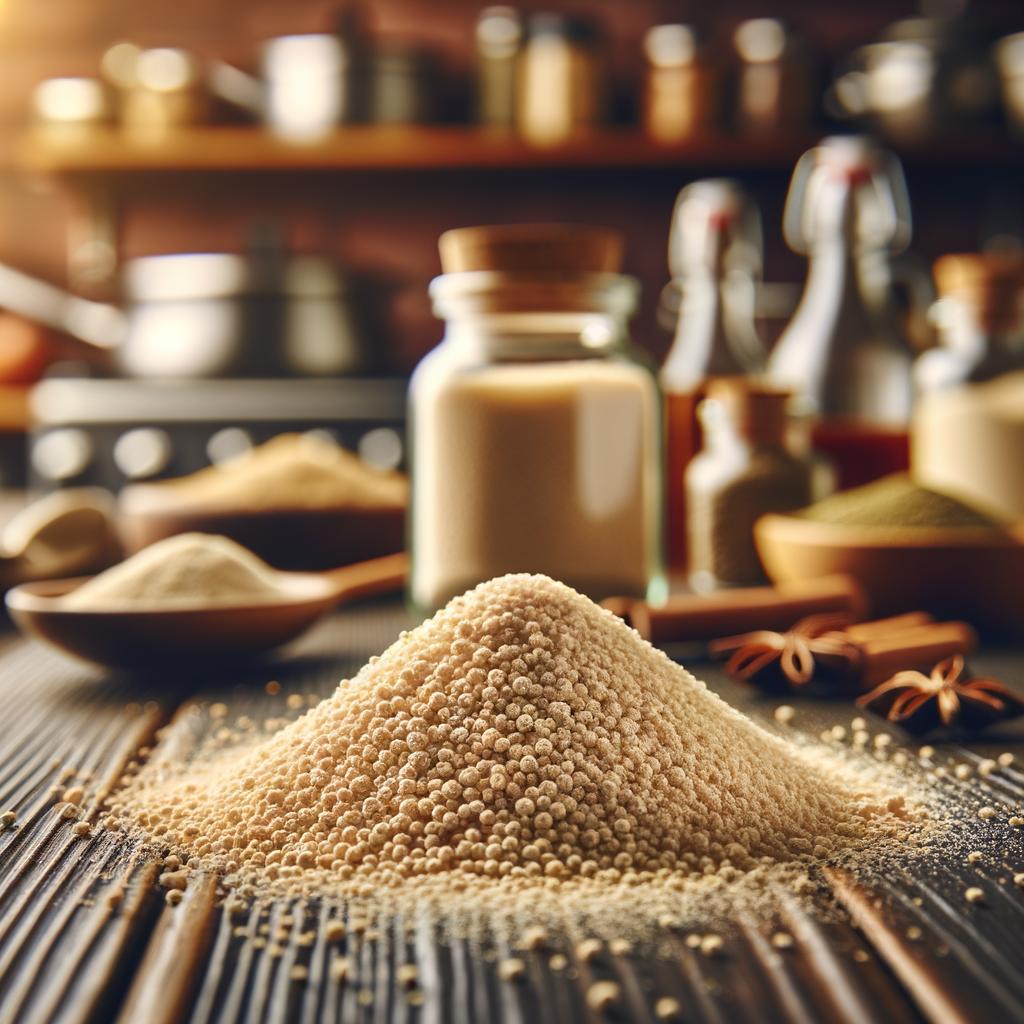Dried Yeast

Description
Dried yeast, also known as active dry yeast, is a fascinating food ingredient that holds a special place in the heart of every baker. Resembling tiny, rough-textured granules, it's a beige colour that whispers of the magic it's capable of. Its flavour profile is unique, with a distinctively earthy, slightly sweet taste that is the secret behind the mouth-watering, yeasty aroma of freshly baked bread. This humble ingredient is actually a type of fungi, which sets it apart from many other ingredients used in cooking and baking.
Primary Uses
Dried yeast is most commonly used as a leavening agent in baking, where it helps dough rise and imparts a specific taste and aroma that's integral to many breads. From the crusty French baguette, to the soft, fluffy dinner rolls, and the sweet, braided challah, dried yeast is a key component. Its usage isn't limited to bread, but extends to other baked goods like doughnuts, cinnamon rolls and even some types of cookies. In addition to its culinary uses, dried yeast also plays an important role in the fermentation process in brewing beer and making wine.
History
The history of yeast is as old as the history of bread itself. It's believed that ancient Egyptians were the first to discover the leavening properties of yeast, and it has been a staple in baking ever since. Over the centuries, the production and usage of yeast have evolved dramatically. Initially, bakers had to rely on naturally occurring yeast, but by the 19th century, commercial yeast production began, making baking more consistent and reliable. There's an old wives' tale that bakers would put a piece of dough from each batch aside to ensure they had yeast for the next day's baking, symbolizing the continuity and tradition of baking.
Nutritional Information
Despite its modest appearance, dried yeast is a nutritional powerhouse. It's rich in B-vitamins, particularly thiamine, riboflavin, niacin, and folic acid, which are essential for energy production and maintaining a healthy nervous system. It also contains a good amount of protein and dietary fiber. Compared to fresh yeast, dried yeast has a longer shelf life and retains its leavening abilities over time, making it a reliable choice for bakers. However, as with any ingredient, moderation is key, as excessive consumption can lead to bloating and digestive discomfort.

